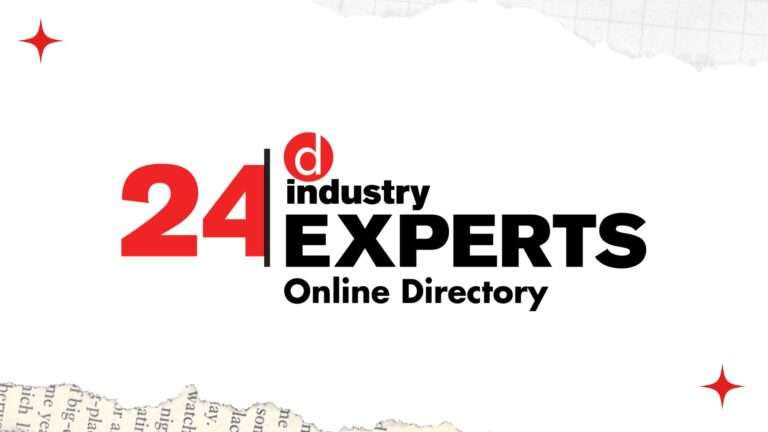Whatever your small or medium-sized business (SMB), chances are you’re dependent on increasingly advanced technology – or wish to use more sophisticated technology. Recent advances have been numerous and head-spinning, sometimes making it hard to keep up. The truth is, harnessing emerging technologies effectively may be exactly what takes your business to the next level, ensuring success in today’s rapidly evolving, competitive business landscape. If you aren’t using one of these emerging technologies in your business yet, it’s likely that your business would benefit from doing so in the near future.
How can you leverage technological advances to help your SMB be more innovative and competitive? Here are trends affecting small businesses to watch when evaluating what technologies to adopt.
Cloud computing
With cloud computing, small-business owners can implement sophisticated software using software as a service (SaaS) or desktop as a service (DaaS) models. The advantage of these models is that they update and maintain applications, eliminating the need for on-site servers or purchasing multiple copies of software. This can help reduce costs and increase efficiency. The DaaS model also stores, helps secure and backs up user data. Additionally, cloud computing means never having to worry about software updates. According to a survey by Garner, 63% of SMBs already use cloud computing.[1] To maximize the benefits of cloud computing, you’ll want to have up-to-date PCs and computing devices.
Artificial Intelligence (AI)
Software that uses AI – or more specifically, machine learning – collects data from tasks, eventually “learning” how to do those tasks more quickly and accurately. AI can thus help your business save time and money by automating certain repetitive, manual tasks that take up too much of your employees’ time. According to a Harris Poll survey conducted for Salesforce, an average of 23% of an SMB team’s day is spent manually inputting data.[2]
Just how popular is AI becoming? Apparently 62% of SMBs are already using technology to automate some processes.[3] And what kinds of AI are they using? Many use tools like Microsoft’s Cortana or Amazon’s Alexa for scheduling and planning, chatbot to analyze customer questions, RPA Express to automate data entry or Salesforce Einstein to analyze data or identify leads – to name just a few. For SMBs wanting to benefit from these technologies, running them on PCs equipped with powerful processors and memory helps ensure they can handle the increased demands on their computing power, such as modern PCs and computing devices powered by the latest Intel(R) Core(TM) processors.
Internet of Things (IoT)
Devices and objects are increasingly interconnected: phones, HVAC systems, security systems, cars and more. To use multiple apps making all those connections, plus tracking products through the supply chain, you may need to upgrade to computers with more powerful processors or more memory (RAM) to help your company use its software more effectively. Perhaps not surprisingly, 78% of growing small businesses already report using more than one business application, while 30% use more than five.[4]
Mobility
The ability for employees to work remotely has become essential, not just for employee well-being and productivity, but for connecting at client offices, satellite venues or while traveling. The effective processing power, speed and longer battery life of modern laptops provide employees with flexibility that helps them – and your business – thrive. Today’s notebooks, thin-and-lights and 2-in-1s are available with more powerful processors, more RAM and more solid-state storage than previous generations of computers. And today’s portable technology can handle cloud-based apps, making them more flexible than ever.
Cybersecurity
Because SMBs don’t have the large IT staff and security budgets of bigger companies, they can be tempting targets for cybercriminals. In a 2018 Cyber Risk Report by Hiscox, 44% of SMBs reported suffering a cyberattack in the previous year, and 52% of those businesses had been attacked more than once.[5] In addition, SMBs still using Windows 7 may be at risk when Microsoft plans to stop providing updates and support for Windows 7.11 after Jan. 14, 2020.
Here are some ways you can help improve the cybersecurity of your business:
* Upgrade to Microsoft’s Windows 10
* Educate employees about cyberthreats, with tips to avoid them
* Enforce use of passwords on business PCs and devices
* Implement 2-factor or biometric authentication
* Set up automatic software updates
Be ready for 2020
Whatever your 2020 goals, it’s a good idea to think strategically about technology that could take your business to the next level. Outdated hardware can affect your SMB’s bottom line, so make updating your PCs part of your technology plan this year.
To learn more about options for updating your technology, visit Intel.com/smallbusiness.
[1] Gartner survey conducted April-May 2017, among 699 U.S.-based SMBs with over 10 employees and annual revenue less than $100 million. The survey excluded nonprofit organizations. Qualified respondents are decision-makers or have significant influence on decisions related to purchasing technologies for their organization. Source: Gartner’s Top Technology Trends for SMBs Survey, cited by Capterra.
[2] Harris Poll online survey conducted on behalf of Salesforce, Sept. 1-13 2017, among 490 small and medium-sized U.S. business owners and leaders 18 years of age or older, with 2-199 employees. Data points were weighted by number of employees to bring them in line with their actual proportions in the population. Source: Salesforce: Small & Medium Business Trends Report.
[3] Ibid.
[4] Ibid.
[5] 2018 Hiscox Small Business Cyber Risk Report(TM) focuses on responses of U.S. small businesses surveyed as part of the Hiscox Cyber Readiness Report 2018(TM) released Feb. 7, 2018. Hiscox commissioned Forrester Consulting to assess organizations’ cyber readiness. In total, 4,103 professionals responsible for their organization’s cybersecurity strategy were contacted (1,000 plus each from the U.K., U.S. and Germany, and 500 each from Spain and the Netherlands). Drawn from a representative sample of organizations by size and sector, these are men and women on the front line of the business battle against cybercrime. While all are involved to a greater or lesser extent in their organization’s cybersecurity effort, over 30% make the final decision on how their business should respond. Respondents completed the online survey between Oct. 12-Nov. 10, 2017. Source: 2018 Hiscox Small Business Cyber Risk Report.
Other names and brands may be claimed as the property of others.
Microsoft, Windows, and the Windows logo are trademarks or registered trademarks of Microsoft Corporation in the United States and/or other countries.
Intel, the Intel logo, and other Intel marks are trademarks of Intel Corporation or its subsidiaries in the U.S. and/or other countries.
(C) Intel Corporation.(BPT) –








